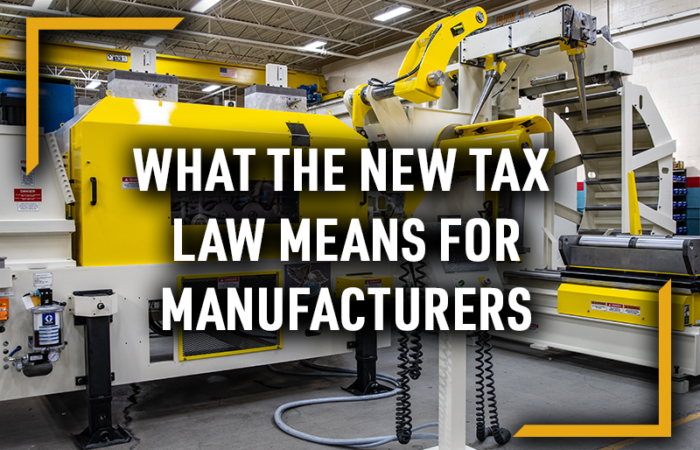
The coil reel is a pay-off device that starts most feed lines. In today’s environment, speed and the ability to handle various steel coils are essential. As a result, the coil reel has become the standard in most feed lines. Years ago, coil cradles competed with coil reels. However, the need to run cosmetic material, rewind coils, and safely un-band and thread new coils has established the coil reel as the dominant player in today’s feed lines.
Types of Coil Reels
The coil reel is available in two main versions: motorized (or powered) and pull-off.
Motorized Coil Reels
Motorized versions advance coils into a loop, either a conventional loop or a “paddle loop.” In a paddle loop, the loop forms around the coil’s outer diameter (OD) to reduce floor space. However, paddle loops require slower speeds, and running high-strength material in a paddle loop can cause containment issues. In either loop design, the material often advances to a feeder or straightener.
Pull-off Coil Reels
 The pull-off version is used in a conventional feed line. This setup includes a pull-off reel, a powered straightener (which pulls the material off the reel), and a servo feed. Most setups also include a thread table that bridges the gap between the powered straightener and the servo feed, allowing hands-free threading of a new coil. People can confuse a pull-off reel with powered or motorized reels, as it can have powered threading to help advance the coil’s leading edge into the powered straightener. Once the material is captured in the straightener, the threading drive disengages. The correctly adjusted drag brake maintains a tight line of steel between the pull-off reel and the powered straightener. Without this tight line, jerking may occur, causing material damage and premature wear of the straightener.
The pull-off version is used in a conventional feed line. This setup includes a pull-off reel, a powered straightener (which pulls the material off the reel), and a servo feed. Most setups also include a thread table that bridges the gap between the powered straightener and the servo feed, allowing hands-free threading of a new coil. People can confuse a pull-off reel with powered or motorized reels, as it can have powered threading to help advance the coil’s leading edge into the powered straightener. Once the material is captured in the straightener, the threading drive disengages. The correctly adjusted drag brake maintains a tight line of steel between the pull-off reel and the powered straightener. Without this tight line, jerking may occur, causing material damage and premature wear of the straightener.
Advancements in Coil Reel Design
Reel design and construction have lagged behind advancements in servo feeds and powered straighteners. However, several updates should be considered when purchasing a new coil reel.
Motorized Reels
- Advanced Loop Controls: Touch-free controls command the drive as the loop height changes. Laser or ultrasonic eyes replace older “dancer arms” and can save multiple loop requirements to job memory.
- Fail-Safe Brake: Prevents the mandrel from rotating due to internal “clock spring” forces when the loop is full or the line is off.
Pull-off Reels
- Auto Drag Compensation: An eye monitors the coil’s OD and adjusts the drag brake pressure as the coil gets smaller.
- Fail-Safe Drag Brakes: Provide full braking when the air source is off to prevent high-strength material from rotating the mandrel and paying material off onto the floor.
Features Common to Both Motorized and Pull-off Reels
- Hydraulic Mandrel Expansion with Timers: Ensures the pads are tight to the coil’s ID without the hydraulic unit running constantly.
- Bolted-On Back Plates: Prevents breakage seen in welded-on designed back plates.
- Full Radius Mandrel Pads: Prevents material damage when using thin gauge material.
- Powered Coil Guides: Eliminates coil keepers, allowing faster setup and better coil containment.
- Option to Add Hold-Down Arms: Reels are designed to allow the addition of options, such as hold-down arms, later with a bolt-on design.
Understanding the different types of coil reels and the latest advancements in their design helps you make an informed decision when investing in new equipment for your feed line. The right coil reel can improve efficiency, reduce material damage, and enhance the overall performance of your production line.
Written by Tom Brockie, Sales
(Check out this FABTECH interview with Tom Brockie)
FAQs About Coil Reels
What is a coil reel used for?
A coil reel is used to hold and dispense coiled steel in a feed line, allowing smooth uncoiling into straighteners and feeders.
What’s the difference between a coil reel and a coil cradle?
Coil cradles support coils from underneath, while coil reels suspend the coil via an expanding mandrel. Reels are better for cosmetic materials and safer uncoiling.
How do you choose the right coil reel?
Consider material type, coil weight and width, uncoiling speed, and whether you need powered threading or loop control systems.
Are motorized coil reels better than pull-off reels?
Motorized coil reels are better for continuous operation and tight loop control. Pull-off reels are often paired with straighteners and offer lower-speed setups with brake drag control.


